Step back in time! Awe-inspiring video offers a glimpse of Malta during the Great War
This incredible video shows us Malta during World War I.
Melanie Drury
20th March 2019
On Tuesday, 4th August 1914, Britain declared war on Germany. The next day, war was proclaimed in Malta.
Little is available in terms of footage and pictures from Malta during that period. The National Archives of Malta, the Richard Ellis Archive and BDL books published some of the little evidence - 12 photos and two records - recalling Malta's experience during the Great War.
Some of the memorabilia from that time shows how 'Maltese labourers' were being recruited for the army and under what conditions. The provision of necessities included a mess tin, spoon, fork, knife, boots, socks and underwear, amongst other things. A third of the salary would be retained for issue on discharge, an advance was possible if required and 'NO SEPARATION ALLOWANCE for families' is in big bold letters. Times were evidently hard.
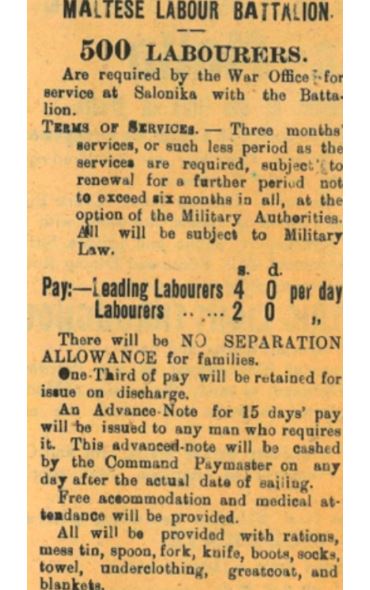
Full employment during wartime was a luxury as were essential commodities such as wheat, flour, oil, cheese, meat, sugar and kerosene. New taxes and soaring inflation, to offset income from customs duties, caused severely reduced living standards.
Another record is a cablegram informing of two casualties in the Salonika Battalion, John Dimech and Domenico Caruana of Hamrun and Valletta respectively. The cablegram requests the next of kin be informed of their ill fate. Hundreds of soldiers actually perished during the war and were buried on the island.
The photos by Richard Ellis are meagre, but very precious testimony, of Malta during World War I.
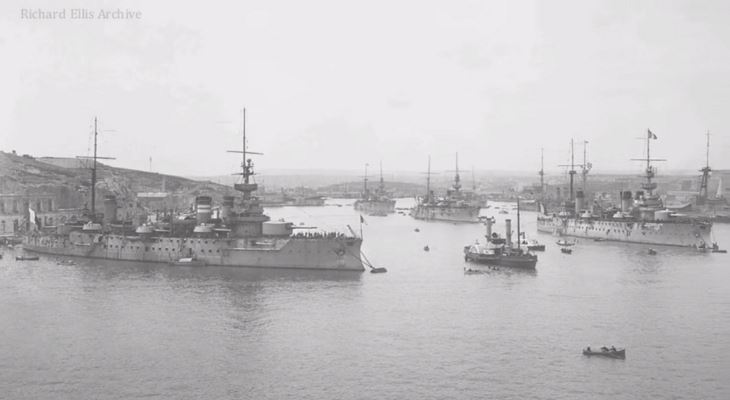
Like many of his photos from World War II, one photo depicts the fearsome sight of several war ships in the Grand Harbour. British, French and Japanese fleets populated the Maltese harbours. The workforce at the dockyard quadrupled to 14,000 to handle the repairs of warships and transport vessels. Most of the other photos get more personal about the reality of war.
The following scene is a hospital ward and everybody is posing for the picture, a rare thing in those days. Hospitals, barracks and some schools served as military hospitals to treat some 60,000 wounded servicemen.
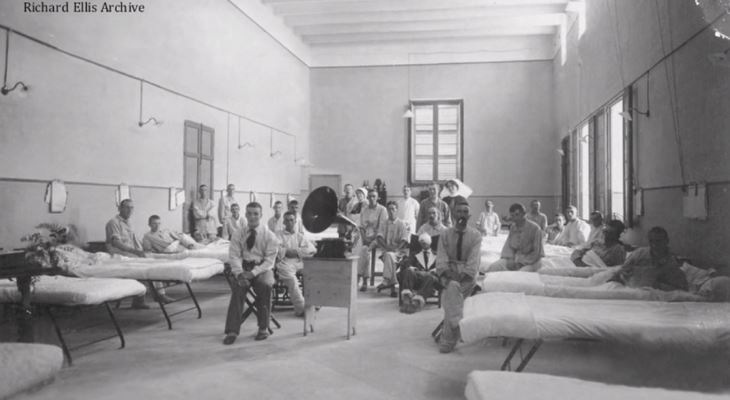
In this picture, patients pose with two sisters, probably nurses, and what looks like a doctor wearing a white overall. One man's head is almost completely bandaged while another holds a cigarette in his mouth. A gramaphone takes a strange pride of place - it was probably a treat and a great source of comfortable distraction.
Another photo shows a strange detail, again in hospital, of a patient getting treatment, although one could hardly tell if this person was dead or alive as he is covered in a white sheet from head to toe!
More oddities can be seen in the gamut of images available from Ellis. In the next example, the location is not clear: the room has several chairs but only three people sitting in it. There are Christmas decorations and two posters on the wall stating: 'A Happy Xmas' and 'See Malta and die'! Definitely evidence of a morbid sense of humour touching on sarcasm.
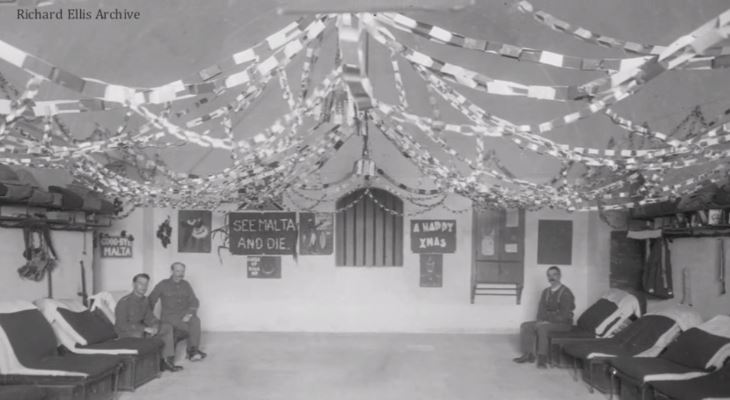
Richard Ellis's fascination was clearly with those injured at war, for most of his photos feature groups of people with bandages, hospital beds and nursing sisters. In those same wards, you'll find games of cards, cigarettes and alcohol. Sometimes the odd guard would be present - Malta was also an internment camp for hundreds of prisoners of war.
In any case, the photographer certainly knew how to capture the spirit of the time and produced work which showed a regiment of uniformed army officials outside a church as well as a mess canteen crowded with soldiers and a Union Jack proudly hanging above them (see below). Here, everyone is waiting for the picture, waiting to be part of this historic ordinary moment captured in time.
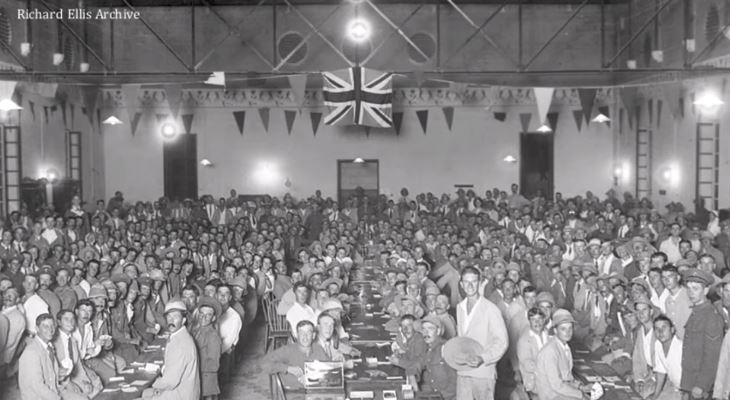
Out on the street, Ellis captures the feel and look of everyday. Men wear berets and women wear the ghonnella, a traditional garment that covered them from head to toe. The occasion is a parade on the Granaries of Floriana.
Another image, another occasion which sees several officials outside the Grandmaster's Palace in Valletta. The flag of the rising sun of Japan sits alongside the Union Jack, obviously honouring the alliance.
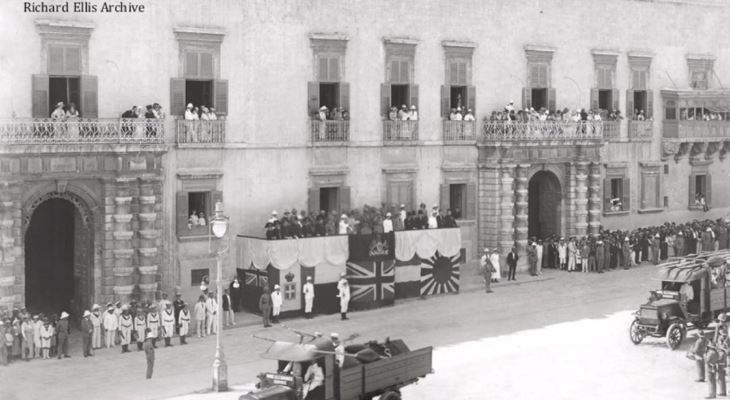
Though Malta was not did not participate on front line, an estimated 24,000 Maltese served with the British services, some facing the horrors of war. For example, the Maltese Labour Battalion fought the Gallipoli Campaign against Turkey. No less than 68,000 hand grenades were manufactured at the dockyard for the Dardanelles army by the Royal Malta Artillery soldiers. An explosion during production killed sixteen Maltese soldiers.
After the war, just as in the rest of Europe, popular expectations remained unfulfilled. Malta suffered post-war unrest that eventually formed its political and social history.